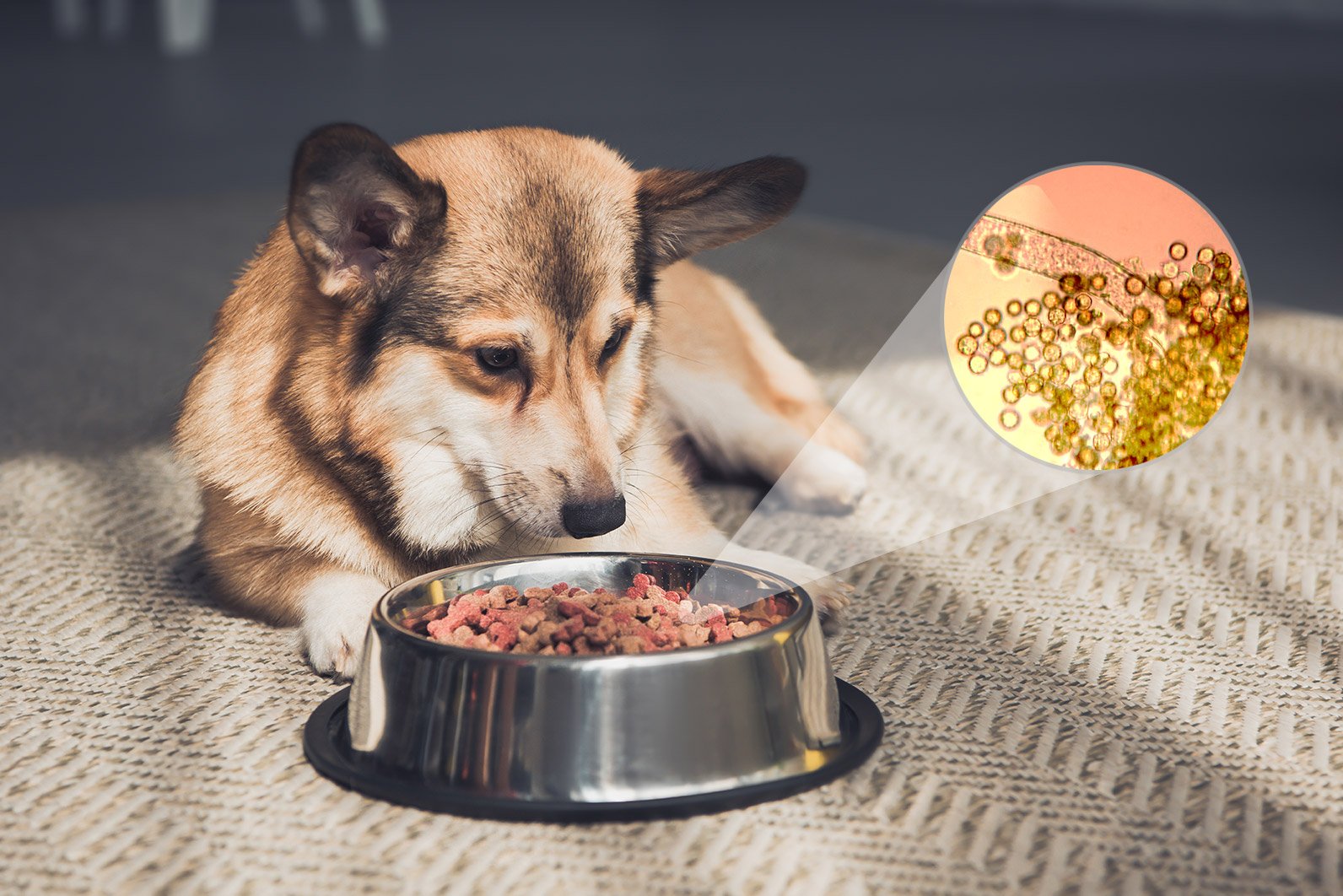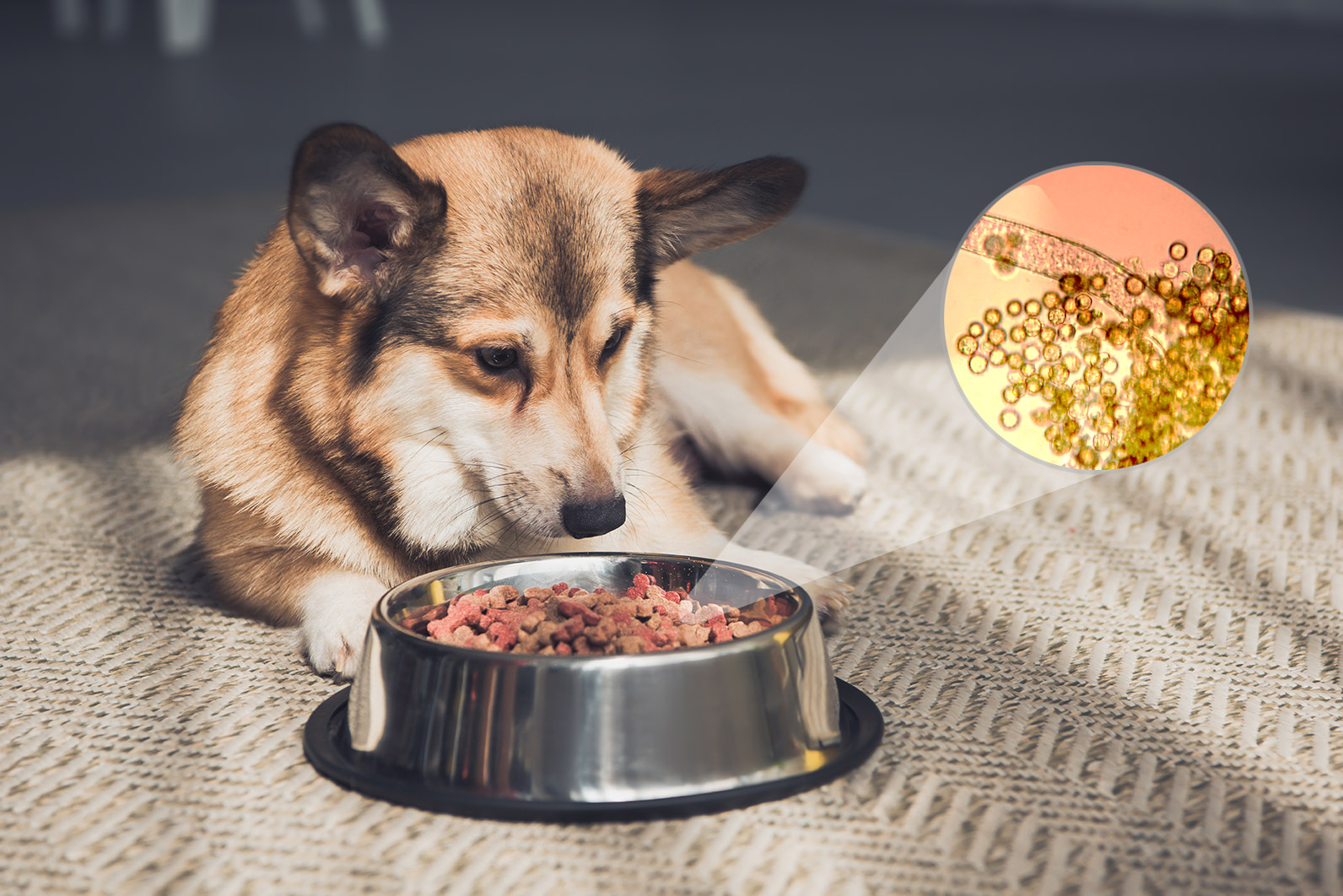

I have always been a dog lover, but it wasn’t until I met my partner, Melanie, and her chihuahua, Emma, during graduate school that a dog became permanently part of my life. Emma is the boss. She is known for being immensely loyal to her people and often skeptical of newcomers, especially men; it took Emma and me all of five minutes to become the best of friends, so much so that Emma is credited with completing one-quarter of my PhD thesis.
Upon moving back to Toronto to start work at SCIEX, a company that assists scientists with complex data, Melanie and I knew that we needed another set of paws in the house. With the help of Texas Chihuahua Rescue, we adopted Angela. Calm, submissive, and a little shy, Angela has become the perfect complement and partner to our excitable, passionate and assertive Emma.
As any dog lover, Melanie and I were distressed and concerned to read about the canine and other pet deaths that occurred at the end of last year because of food poisoned by mycotoxins. This hit particularly close to home because my work at SCIEX involves the development of new technologies and methods to screen foodstuffs for contaminants such as mycotoxins.
What are Mycotoxins?
Contents
Mycotoxins are naturally occurring poisonous chemicals produced by certain molds and fungi. They can grow on various crops and foodstuffs, including cereals, nuts, spices, dried fruits, apples, and coffee beans, especially when conditions are warm and humid. Contamination can happen at several points during food production because molds can grow on living crop plants, harvested fruits and grains, and stored processed food products. Most mycotoxins are chemically stable enough to survive food processing. They remain toxic even after breakdown into byproduct metabolites that can be found in the milk of animals that have been fed contaminated feed.
GET THE BARK NEWSLETTER IN YOUR INBOX!
Sign up and get the answers to your questions.
Eating mycotoxin-contaminated food can make humans and animals severely ill and even be lethal when certain mycotoxins, like aflatoxins, are ingested in large doses. Aflatoxins are relatively common mycotoxins, which can damage the liver.
Mycotoxins can also have long-term impacts on health, such as inducing cancers and immune deficiency. There are several hundreds of mycotoxins known, but many remain unidentified, sometimes because these mycotoxins are difficult to detect. These “masked mycotoxins” and other newly “emerging mycotoxins” are causing growing concern within the food safety and security industry.
How are foods screened for them?
Final food products and raw ingredients are routinely screened for mycotoxin contamination using advanced analytical chemistry methods involving liquid chromatography (LC) combined with mass spectrometry (MS). The LC technique is used to separate out the different component compounds in the food based on the other physical properties of each of the components. These compounds are then detected, identified, and quantified based on their chemical properties, namely their mass to charge ratio, using MS technologies. Spurred on by the emergence of masked and other newly discovered mycotoxins and the growing need of scientists to better detect these toxins, SCIEX developed detection methods using LC-MS, the latest of which can detect 530 mycotoxins at a time, quickly and precisely.
How do you protect yourself and your dog from mycotoxin threats?
Although a dog’s super-sense of smell is able to detect molds, that doesn’t necessarily mean they will steer clear of them. As any pupper’s person can attest, dogs will eat, sniff or lick (almost) anything resembling food – moldy or not. To try and minimize their risk of getting sick, stay vigilant.
- Deter them from rooting around compost heaps, piles of moldy leaves, wild mushrooms, or trash cans containing rotting food.
- You can also minimize the risks at home by ensuring food is properly dried and stored.
- Avoid keeping food in warm and humid conditions, which are perfect for mold growth.
- Check foods such as whole grains, dried fruits, and nuts regularly and discard any that look moldy, discolored, or shriveled.
- Buy grains and nuts as fresh as possible and store them properly in dry and cool conditions, away from insects.
- Avoid damaging grains before drying and storing, and minimize the amount of time that foods are stored before being eaten.
- Check out the FDA’s health notices for dog food recalls and advisories.
It is important to note that molds that produce mycotoxins can penetrate deep into food and do not just grow on the surface.
Watch out for symptoms that they may be sick, including confusion, vomiting, and loss of appetite. They may also have neurological symptoms such as tremors, seizures, or ataxia (which will look like they are drunk or having trouble walking). If your best friend displays any neurological symptoms or any of these symptoms in combination, take them to your vet for a check-up.
By taking these measures, we can do our best to keep our best friends and ourselves safe and protected while making the most of our de facto “colleagues” as we work from home.